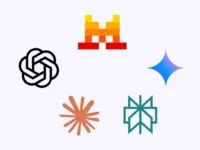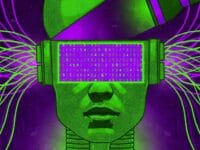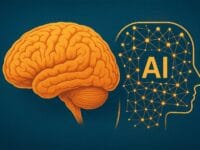Publié : 24 September 2025
Actualisé : 3 weeks ago
Fiabilité : ✓ Sources vérifiées
Notre équipe met à jour cet article dès que de nouvelles informations sont disponibles.
📋 Sommaire
AI Outmatched by Children in a Puzzle Game
Children aged 6 to 11 years old surpassed an advanced artificial intelligence in a visual puzzle game, demonstrating the current limitations of AI in terms of creativity and intuition.
The study conducted by the University of Washington revealed that the young participants regularly solved complex puzzles that posed problems for the AI. This experience highlights the importance of critical thinking in the face of even the most sophisticated technologies.
The implications of this discovery go beyond the simple game, highlighting the potential of game-based learning to develop essential skills in an increasingly technology-driven world.
AI Puzzlers: The Game That Traps AI
The game “AI Puzzlers”, specially designed for the study, uses visual puzzles from the ARC (Abstraction and Reasoning Corpus). These puzzles are easy for humans to solve, but difficult for machines.
The game pits children against an AI chatbot in a two-round duel. The children first solve the puzzle manually, then the AI attempts to solve it in turn. The experience is accessible via a web browser, allowing for a comparison of human and artificial logic.
The results showed that children consistently outperformed the AI, even the most sophisticated ones, highlighting the limitations of algorithms in the face of abstraction and creative reasoning.
AI Struggles Against Children’s Ingenuity
Initially perceived as “super intelligent” by the children, the AI quickly lost its credibility by failing to solve puzzles that the children easily solved. One of them even declared: “That’s really totally wrong!” when observing the AI’s mistakes.
This experience allowed the children to understand that AI, despite its power, can be wrong. They realized that their own creativity and intuition were valuable assets. One child summarized the situation by saying:
“It’s the spirit of the Internet trying to solve, but the human brain is creative.”
The children’s confidence grew as they saw their ability to surpass the AI. The experience also highlighted the importance of critical thinking in the face of technology, even that which seems infallible.
Developing Critical Thinking Through Play
The study demonstrates the potential of games to develop critical thinking in the face of technology. By confronting children with the limitations of AI, the experience encourages them to question, test, and verify information provided by machines.
The game’s “Assist” mode allows children to give clues to the AI, encouraging them to formulate precise instructions and understand how algorithms work. One participant expressed her frustration with the AI by exclaiming:
“I’m so sick of you, AI!”
This active interaction with AI transforms children into apprentice programmers, encouraging them to understand the mechanisms underlying technology and adopt a more critical approach.
Creativity vs. Algorithm: A Revealing Face-off
The study highlights the fundamental difference between human intelligence and AI. Children, through their intuition and creativity, approach problems with a flexibility that current algorithms lack.
AIs excel at analyzing massive amounts of data and detecting patterns, but struggle to think outside the box. Children, on the other hand, adapt and improvise, using their imagination to find innovative solutions.
This contrast highlights the potential complementarity between human and artificial intelligence. AI can process astronomical amounts of data, while humans bring a creative perspective and adaptable reasoning.
AI in School with Children: A Future Perspective
This study opens interesting perspectives for the future of AI. By observing children’s strategies, developers could improve algorithms and create more “intelligent” systems with greater cognitive flexibility.
The experience also demonstrates that children, far from being mere consumers of technology, can play an active role in its development. Their natural skepticism and ability to think “outside the box” make them valuable testers for emerging technologies.
The study suggests that game-based learning can be a powerful tool to prepare young generations for a world where AI will play an increasing role. By developing their critical thinking and understanding of technologies, they are given the keys to navigate a complex and constantly evolving digital landscape.






















0 Comments